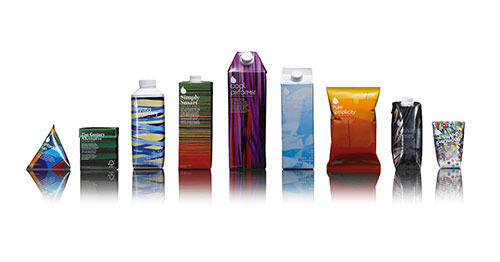Jean-Pierre Berlan • Director of Processing • Tetra Pak U.S. and Canada
Food and beverage companies have the power to make a difference in reducing waste, which occurs throughout the entire supply chain. Doing so not only affects a company’s bottom line (reduced waste equals lower costs), but benefits the planet through the conservation of natural resources and reduced levels of greenhouse gases. Waste can happen anywhere on the value chain, and producers can take action to reduce it or even eliminate it in their parts of the process.
By looking at their processing and packaging operations, both of which offer opportunities to pare waste, food and beverage producers can start addressing this issue. Here are some ways to take action.

The processing side
Inefficient lines, formulation changes and maintenance can cause product losses in large-scale food manufacturing plants. Plant managers can cut waste by employing strategies to prevent product loss and maximize production efficiencies.
They should start with the easiest issue first: inefficient plant designs. In the U.S. dairy industry, milk losses can average 2 to 3% from the time the raw milk enters the factory to when the finished product is packaged and shipped. Although this may sound insignificant, it adds up to approximately 1.4 billion pounds of milk per year in the U.S., and that number more than doubles if it includes cheese production.
These losses happen for various reasons. In one case, when large-scale equipment is used to process food, the machines must be cleaned for food safety. During those cleanings, milk is lost. A typical plant processing 500,000 gallons can lose 3%, or 15,000 gallons, a day. One solution is employing equipment designed to run much longer between cleanings, maximizing efficiency and minimizing product loss.
Inefficient equipment design results in further losses, as well as the diverse range of products consumers currently demand, which challenges plants to produce a broad number of SKUs. On a daily basis, producing products that require many different ingredients and format changes incurs multiple line changes, which leads to production stops and starts and additional cleaning cycles. Inevitably, this leads to more losses.
Processing plants should be designed in the most efficient way possible, which means they should be compact and have equipment that can fulfill more than one function. Tetra Pak has developed a number of technologies aimed at making liquid food processing plants more efficient and compact. These include the OneStep technology that significantly cuts processing time—and the loss associated with it—by giving processors the ability to change fat contents more quickly.
Water consumption is another area where food and beverage manufacturers can reduce waste. For example, processing a gallon of milk takes 2 to 3 lb of water, and inefficient plant design can send that figure higher. This is water used primarily to clean and rinse the equipment, which can be reduced by installing equipment that requires fewer cleanings and offers other efficiencies. For the U.S. dairy industry, which produces about 23 billion gallons of milk per year, it’s easy to see that it is critical to diminish losses to conserve water.
The packaging side
Packaging also plays an important role in preventing food and beverage waste. For starters, the choice of package affects environmental impact, shelf life, and resource consumption during transportation and storage. Consider milk in aseptic cartons. It remains safe to drink for up to six months after packaging without refrigeration until opening. Chilled milk lasts only about two weeks and requires electricity during transport, retail display and home storage. Containers that protect product without refrigeration reduce waste along the chain by averting energy consumption needed for chilled transport and storage. Further, storing goods in ambient condition reduces spoilage risk, said Antonio Rendina, Tetra Pak’s aseptic performance management director.
Producers also must consider packaging that strikes a balance between protecting product to ensure its sale and consumption, rather than waste, and using an economical amount of material to produce the container. Reducing packaging weight also uses fewer resources in transportation and leaves less material at the end of the package’s lifecycle.
Ergonomic packaging design can also help producers reduce waste that occurs after a product leaves the store. For example, by considering how people open and close packages during the design phase, companies can avoid waste by making packages easier to open and more efficient in closure and storage to keep unused portions intact. Testing packages’ usability among various age groups, ranging from young children to seniors, is key, said Rendina. If they can handle the packages capably, they are less likely to fumble, drop, spill and waste product.
Taking a holistic view of packaging and processing elements throughout the food and beverage manufacturing value chain—and enacting changes where possible—helps prevent waste, which ultimately benefits businesses, the environment and society.
Tetra Pak
www.tetrapak.com/us
Filed Under: Green engineering • renewable energy • sustainability, Food + beverage, Packaging, MOTION CONTROL, MORE INDUSTRIES





What about the packing loss in the package process? I work in a food industry and here they loss about 11% of the packing used, measuring this is hard because any production trade make loss, so, if they produce low packs of food, the percentage will be higher than a high pack production.
I cant find any historical about this fact.
Packaging losses may be particularly costly as frequently a damaged packaged (e.g. a tub with defective lid) is already filled with the food product which now becomes waste.
Close observation of machine operation and the plant work practices is a first step to improvement.
I found in one major loss instance in a consumer pack packaging line it was necessary to hold daily review meetings (not sitting down) for two weeks before the packaging supplier defects, poor maintenance of machines , inappropriate detergent use in machine cleaning and management practice on the line were resolved